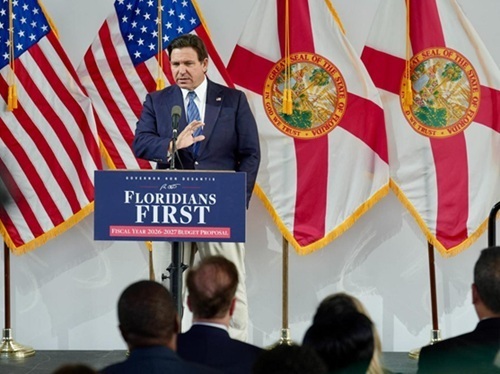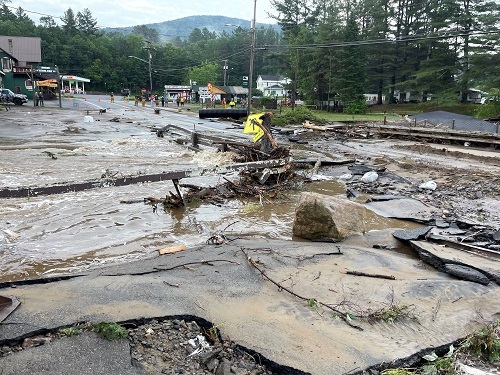State departments of transportation in the Northeastern and Mid-Atlantic regions of the United States – from Vermont and New York down to West Virginia – are working to repair roads, bridges, and other infrastructure damaged by a series of major storms and flood events over the last two weeks.
[Above photo by NYSDOT]
“This historic rainfall and flooding have caused catastrophic damage to infrastructure across the state, and destroyed homes and businesses,” said Vermont Governor Phil Scott (R) in a recent statement.
“Securing and rebuilding roads and critical infrastructure needs to happen quickly to keep Vermonters safe,” he added. “My team is committed to working with federal and local partners to make sure Vermonters get all resources available to them to recover from these catastrophic floods.”

President Biden recently approved the governor’s request for a major disaster declaration to speed up recovery efforts from the flooding that struck Vermont from July 7-12. Pete Buttigieg, secretary of the U.S. Department of Transportation, also surveyed flood-damaged areas of Vermont with Gov. Scott and Joe Flynn, secretary of the Vermont Agency of Transportation, as USDOT maps how out to assist the Mountain State with its infrastructure repair efforts.
Meanwhile, New York State Governor Kathy Hochul (D) is aiding Vermont’s recovery efforts by deploying nine engineers to assist in performing dam safety evaluations – help provided under the Emergency Management Assistance Compact (EMAC), a national disaster relief system that allows states to send personnel, equipment, and commodities to assist with response and recovery efforts in other states.
She also extended the application deadline for certain resiliency-related state grants in the wake of impacts from that flooding to August 11; providing communities affected by storm damage additional time to apply for resources to help improve water quality, strengthen flood resiliency, and mitigate climate change.
“Communities dealing with the destruction and aftermath of these severe weather events shouldn’t lose out on the opportunity to apply for grant funding that could advance critical water quality and resiliency projects,” she said in a separate statement. “Extending the deadline will give flood-stricken communities time to finish their applications for projects that will protect public health, prepare for future severe weather events, and create jobs that boost local economies.”
The New York State Department of Transportation added that its crews, along with local and state agency partners, continue to work statewide but especially in the Hudson Valley to repair and reopen roads and bridges damaged by the flooding.
Heavy rain storms also hit West Virginia this week – downing trees and causing flooding statewide, with Gilmer, Kanawha, Putnam, and Mason counties hit particularly hard.
The West Virginia Department of Transportation said West Virginia Division of Highways cleanup crews are working to clear fallen trees, dig out mudslides, and reopen roads following those heavy storms.
“Our crews are first responders in every sense of the word,” said Joe Pack, WVDOH chief engineer of district operations, in a statement. “In most cases we have to be out before police and fire and ambulance, in rain and wind and bad weather, to make sure roads are open.”
 States
States
NCDOT Staff Participate in ‘Explosive’ Technical Training
December 19, 2025 States
States

